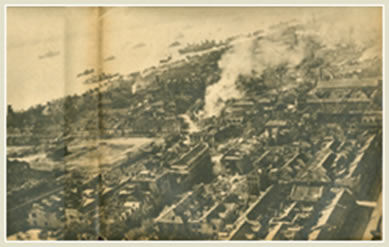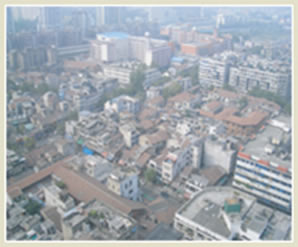Core Joint Research Projects
1. Studies on the Network Formation for Research on Nonwritten Cultural Materials

The aim of this project is to form a global network on nonwritten cultural materials and bring together researchers in the field from around the world to conduct joint research projects, with the Center acting as the hub. This aim, however, is easier said than done. Though we have been able to acquire a general perspective of the various fields and methods on the field in Japan thanks to the 21st Century COE Program, we have yet to grasp the research situation on nonwritten cultural materials in other parts of the world, or the characteristics and discrepancies in that study in other areas and cultures. We had formed international partnerships with research institutions around the world during the COE Program and promoted the exchange of information and research staff, but we had not been able to grasp international trends in research.
Therefore, our first step to take will be to conduct preliminary research in preparation for joint research programs on a global level. The aims to be achieved are as follows:
- To grasp and analyze the current circumstances surrounding studies on nonwritten cultural materials around the world and to look for future trends.
- To cover a broad range of research institutions that conduct studies on nonwritten cultural materials around the world and form relationships of information exchange with some of the major institutions.
- To incorporate the best researchers in the field from around the world into the Center’s organization, and initiate international joint research projects on specific issues.
Task assignment for the joint research project
| Research leader | FUKUTA Ajio |
|---|---|
| Joint researchers | OSATO Hiroaki, OGUMA Makoto, KIM Jeong Ah, MATOBA Akihiro |
| Research collaborators | TOMIZAWA Tatsuzo, NAKAMACHI Yasuko |
2. Studies on System Development for the Dissemination of Nonwritten Cultural Materials: “System Development for the Dissemination of Regionally Integrated Information”

Aim of the joint research project
As a part of the 21st Century COE Program, we have been working together with the town of Tadami-cho in Oku-Aizu, Fukushima, in an attempt to put together information on the region’s lifestyles, culture, history, and nature, and to disseminate them on the web. Though the town is small, there is an infinite amount of such information available. As we were able to disseminate only small portions of our work under the COE Program , we decided to carry on with our attempts.
We have started working to incorporate the contents of the already collected material (mostly cards with detailed records of work processes for the current fiscal year) onto the website of Tadami-cho Eco Museum. Among the issues that need to be addressed, we need to collate our findings into basic data that builds on the results of past research, and we must contribute to research development instead of merely disseminating regional information for tourists. We must also address the construction of methods for information dissemination that are not only current and updated, but include a timeline showing historical results. From the onset, the initial research theme was the integration of research fields in nonwritten cultural materials, such as illustrated materials, scenery and the environment, folk implements, movies, and physical techniques. In the future, we will need to be more specific in how to integrate these fields in our lines of research.
Task assignment for the joint research project
| Research leader | KITSUKAWA Toshitada |
|---|---|
| Joint researchers | SANO Kenji, TAGAMI Shigeru, KINOSHITA Hirotsugu, TSUDA Yoshiki, YASUMURO Satoru |
| Research collaborators | KOMATSU Daisuke, LESIGNE Frederic |
Specific Joint Research Projects
1. Compilation and Joint Research on the Multilingual Version of Pictopedia of Everyday Life in Medieval Japan

Aim of the joint research project
One of the central themes of the COE Program was publish the Pictopedia of Everyday Life in Medieval Japan(hereafter referred to as the Pictopedia), which has an established reputation, so that it may be made more widely available for use. During the course of the Program, we were able to publish Volumes 1 and 2 of the multilingual version, for which we had been planning to publish a total of 5 volumes.
The aim of this joint research project is to complete the publication of the translated version of the Pictopedi a within 3 years. We hope that researchers in history, folklore, anthropology, literature and other disciplines will then use this text in reference to various aspects of Japanese cultural life studies.
The process for the translation and publication of the Pictopedia is as follows.
Firstly, based on the past results of the publication of Volumes 1 and 2, the comments are currently being translated into English, along with multilingual captions in English, Chinese, and Korean.
Translation is done by young researchers in the same way as during the COE Program, and a special dictionary dedicated to the Pictopedia, which provides explanations for words such as eboshi (formal hat worn by adult males in the Heian era) and kosode (basic Japanese robe for both men and women) which are not easily translatable into English, is now being created with the aim of nurturing the next generation of researchers.
Task assignment for the joint research project
| Research leader | BOCCELLARI John |
|---|---|
| Joint researchers | KIM Jeong Ah, FUKUTA Ajio, RATCLIFF Christian |
| Research collaborators | HE Bin, KIMI Yasumichi, LI Li, MANJIN Alexandre, NAKAI Maki, SEO Dong Chun |
2. The Process of Urban Reconstruction Following the Great Kanto Earthquake, Creation of Database and Collection of Materials

Aim of the joint research project
The aim of this project is to further reinforce and update the contents of"of"The 1923 Great Kanto Earthquake: Photo/Map Database ", which which was created under the task, "Interpretation of the Traces of Human Activity and Natural Disasters Inscribed into the Environment" in theCOE Program. The following is a general overview.
The reconstruction of Tokyo after the Great Kanto Earthquake permanently altered the city's space. The older city was swept away through the reorganization of public facilities and the reconstruction of private buildings. The disaster also brought about social and cultural transformation that reached into the lifestyles and habits of Tokyo's residents. As very little verifiable research has been conducted so far on such changes, the Center aims to break new ground in these areas, while also hoping to discover new relevant materials.
We are currently listing unfiled materials related to the Great Kanto Earthquake, which had been kept in storage at the Tokyo Memorial Hall for the Casualties. We are also analyzing materials on the Mitsui Family, which is a case of wealthy merchants going into the businesses of shanty architecture and refugee detention after the disaster.
Task assignment for the joint research project
| Research leader | KITAHARA Itoko |
|---|---|
| Joint researchers | NOTO Masato |
| Research collaborators | TAKANO Hiroyasu, KAWANISHI Takayuki |
3. Former Japanese Concessions in China and Korea


(the red roof on the near left is the former Dōjinkai hospital)
Aim of the joint research project
Materials relevant to the Japanese concessions established in prewar China and Korea (specifically Tianjin, Hankou, Hangzhou, Suzhou, and Chongqing in China and Incheon, Busan, and Wonsan in Korea) will be collected, and on-site investigations will be conducted wherever possible. Through these activities, the research aims to reveal how modern Japan made its way into China and Korea.
The research also plans to reveal the lifestyles of the many Japanese who once lived in the various concessions, by conducting hearings and collecting and analyzing photographs and picture postcards of the times, paving the way for research methods of nonwritten cultural materials in this line of study.
The research also expands its interests into the actual condition of leased territories and land for railway lines formerly set up in China, in order to add diversity to the studies on former concessions.
Task assignment for the joint research project
| Research leader | OSATO Hiroaki |
|---|---|
| Joint researchers | SON An Suk |
| Research collaborators | KISHI Toshihiko, TOMII Masanori, HAN Dong Soo |
4. Studies on the Realities of Continuity and Transformation - the Case of 60 Years of Study in Tsushima

Aim of the joint research project
The aim of this joint research project is to construct a general theory on the dynamics of continuity and transformation in societies and culture.
We will start by accumulating specific case studies. By conducting intensive observation and research in specific geographical regions for a given time period, we will understand and examine the factors that bring about changes, and the conditions that make continuity possible, and reveal how they interact with each other.
For the time being, the team will focus on Tsushima Island in Nagasaki. The Confederation of Nine Academic Societies conducted a comprehensive investigation there approximately 60 years ago, and detailed records from this investigation remain in Tsushima. The area's transformation in the past six decades is expected to be great, especially since the high-growth period of the Japanese economy took place within this time. But the fact that the area is a remote island has helped immunize it from the destructive effects of large-scale development projects, leaving favorable conditions for observing aspects of continuity and transformation. The research will focus mainly on nonwritten cultural materials such as photographs, maps, illustrated materials, architecture, and folk implements, but it will also include other written materials as well, keeping in mind the perspective of integrating information gained from both.
Task assignment for the joint research project
| Research leader | KITSUKAWA Toshitada |
|---|---|
| Joint researchers | TSUDA Yoshiki |
| Research collaborators | FUJINAGA Go, HONDA Kana |
